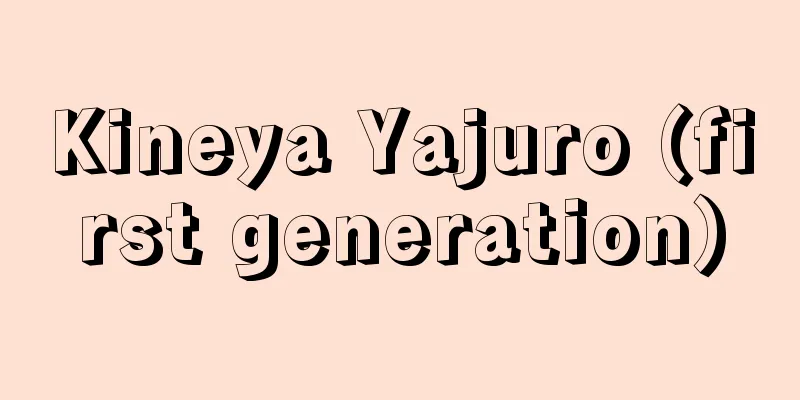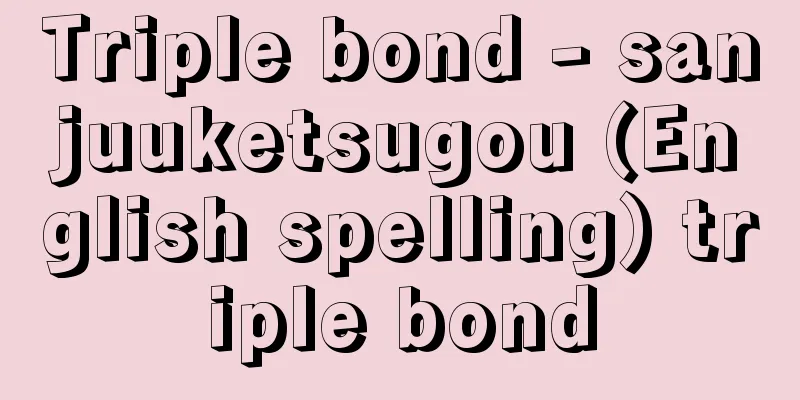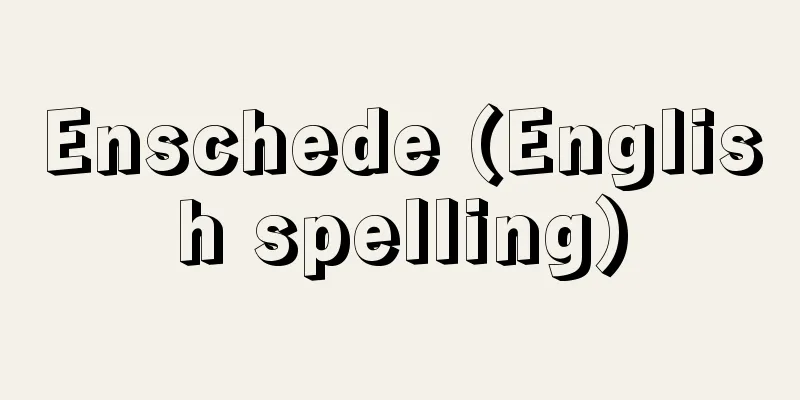Western-style painting

|
Japanese paintings from before the modern era that were painted using Western painting techniques. This does not include paintings that use Eastern painting techniques, even if they have Western people or ships as their subject. Conversely, paintings based on the perspective of Western painting techniques, even if they have Eastern themes, Japanese landscapes or customs, and use paper, silk or Japanese paints, are Western-style paintings. Western-style paintings are divided into two periods: the early period (Momoyama to early Edo period) and the late period (late Edo period). The first period of Western-style painting was once called Nanban-e, and the second period was called Koumo-ga, Dutch-e (Oranda-e, Oranda-e, Oranda-e), and Ranga. The origin of the first Western-style painting was the spread of Christianity in the early modern period. In order to make up for the lack of imported Christian sacred paintings, the Society of Jesus, which was engaged in missionary work in Japan at that time, had Japanese students copy Western copperplate prints and other materials to create sacred paintings at their religious education facilities. As a result, many Japanese-made sacred paintings began to appear in the early 1590s, but the first Western-style paintings declined by the end of the 17th century due to the subsequent strict prohibition of Christianity and isolation from the rest of the country. Although they were born in Japan, they were formed as part of the church's missionary policy and were also taught by foreign clergy, so they are a direct descendant of Western painting. Most sacred paintings created in the early modern period were destroyed and burned, but the few remaining remains show that both hand-painted and copperplate prints were quite skillfully copied from imported originals. Meanwhile, in addition to sacred paintings, secular paintings were also produced to meet the taste for the South Barbarians at the time, or to demonstrate the power and culture of Europe. As these are not Christian paintings, there are a considerable number of surviving pieces, with themes such as statues of Western kings and princes, battles between Christian and Islamic armies, cities and customs around the world, and scenes of Western suburban leisure. These were also copies of imported originals, but because there were no iconographical restrictions like religious paintings, artists made slight changes to the originals for each work to create variation. Also, as with other early modern appreciation paintings, many of the secular paintings from the first period of Western-style painting were painted on folding screens, and there are examples where the originals were stretched horizontally or joined together. However, since secular paintings were basically copies, and there was little interest in the perspective unique to Western painting, and the production period was short, they ended up not inspiring the contemporary art world. There were some attempts at Western-style expression in the mid-Edo period after the decline of the first period of Western-style painting, but we will not discuss these here. The second period of Western-style painting was born out of the development of Dutch studies after the mid-Edo period. Early Dutch scholars, seeing the detailed illustrations in Western books, keenly felt the need to study Western natural science, but Western-style painters of the same period were also fascinated by the realistic expressions in the illustrations in Western books, and realized that Western paintings were superior to realism, and tried to master rational viewpoints such as shading and perspective. Since Western-style painting of this period was born under the isolationist system, it was not possible to receive guidance from foreigners, and it was unrelated to the mainstream of Western painting in the 18th and 19th centuries. In addition, to learn Western painting techniques, they adopted pre-modern methods such as copying imported copperplate prints and illustrations in books. However, Western-style painters of this period were more interested in the realism of Western painting than anything else, and tried to incorporate Western painting techniques as opposed to traditional painting techniques. Therefore, for them, copying Western originals was mainly for the purpose of learning painting techniques, and was not an end in itself, as the first period Western-style painters had done. At that time, books and copperplate prints used in the study of Western painting were of course imported through Nagasaki. However, Western-style painting in Nagasaki was born later than in Edo, the cultural center, and although the technique was excellent, most of the works were copies of Western paintings. On the other hand, in Edo, where there were many educated people, Western-style painting developed greatly, and in the 1770s, Akita Ranga, followed by Shiba Kokan and Aodo Denzen, emerged. Edo-style Western-style painting not only copied Western originals, but also made considerable achievements in Westernizing traditional themes and depicting Japanese landscapes and customs. Even if it was not the direct ancestor of modern Western painting after the Meiji period, it had a considerable influence on some of the Nanga and Shasei paintings of the same period, and the landscape prints of Hokusai and Hiroshige, because it was enthusiastic about absorbing Western painting methods themselves and pioneering Oriental and Japanese themes. [Fujio Naruse] "Original Color Japanese Art 25: Nanban Art and Western-style Painting" by Mitsuru Sakamoto et al. (1970, Shogakukan) [Reference items] | |Source: Shogakukan Encyclopedia Nipponica About Encyclopedia Nipponica Information | Legend |
|
西洋画法により描かれた近代以前の日本絵画。洋人や洋船を主題としていても、東洋画法によるものは含まない。逆に東洋的主題や日本風景、風俗を扱い、紙、絹や日本絵の具を用いても、西洋画法の視点に基づく絵画は洋風画である。洋風画は前期(桃山~江戸前期)、後期(江戸後期)の二期に分けられる。そして、かつては第一期洋風画を南蛮絵(なんばんえ)、第二期洋風画を紅毛画(こうもうが)、オランダ絵(阿蘭陀絵、和蘭陀絵、和蘭絵)、および蘭画(らんが)などといった。 第一期洋風画の母胎は、近世初期におけるキリスト教の伝播(でんぱ)である。当時日本布教にあたっていたイエズス会では、輸入キリスト教聖画の不足を補うために、その宗教教育施設において、信者の日本人学生に西洋銅版画などを模写させ、聖画を制作させた。このため、1590年代の初めには多くの日本製聖画が世に出るようになったが、その後のキリスト教厳禁と鎖国のため、第一期洋風画は17世紀末までに衰滅した。それは日本で生まれたが、教会の布教政策の一環として形成され、外人聖職者の指導もあったから、西欧絵画の直系に属する。近世初期に描かれた聖画は、ほとんど破壊焼却されてしまったが、わずかの現存遺品をみると、肉筆画、銅版画とも、輸入原画をかなり巧みに模写したことがわかる。一方、聖画以外に世俗画も当時の南蛮趣味にこたえるため、あるいはヨーロッパの勢威と文化を示すために制作された。これらはキリスト教絵画でないため、相当数の遺品があり、西洋王侯の像、キリスト教国軍とイスラム軍の戦闘、世界の都市と風俗、洋人郊外遊楽の情景などの主題がある。これらもやはり輸入原画を写しているが、宗教画ほど図像上の制約がないため、画家たちは作品ごとに原画をすこしずつ変えて変化をつけている。また、第一期洋風画の世俗画は、他の近世初期の鑑賞画と同様に、多く屏風(びょうぶ)絵であるため、原画を横に伸ばしたり、つないだりしている例がある。しかし、世俗画も基本的には模写画であり、西洋画特有の視点に関心が薄く、制作期間も短かったため、同時代の画壇に刺激を与えずに終わった。第一期洋風画の衰滅後の江戸中期にも、多少の洋風表現の試みはあったが、それらについては省略する。 第二期洋風画は、江戸中期以後の蘭学の発達に基づいて生まれた。初期の蘭学者は洋書の精密な挿絵をみて、西洋自然科学研究の必要性を痛感したが、同時期の洋風画家も、洋書の挿絵の迫真的表現に魅せられ、西洋画が写実性に勝ることを知り、陰影法や遠近法のような合理的視点を体得しようとした。この期の洋風画は鎖国体制下に生まれたから、まず、外人の指導は得られなかったし、18、9世紀の西欧絵画の主流とも無関係であった。また、西洋画法を学ぶにも、輸入の銅版画や図書の挿絵を写すという前近代的手段をとった。しかし、この期の洋風画家は、なによりも西洋画の写実性に関心を寄せ、西洋画法を伝統的画法に対立するものとして摂取しようとした。そのため、西洋原画の模写は彼らにとりおもに画法習得のためであって、第一期洋風画家のように目的自体ではなかった。当時、西洋画研究に用いる図書や銅版画はもちろん長崎を通じて輸入された。しかし、長崎の洋風画は、文化の中心である江戸より遅く生まれ、しかも技術は優れていても西洋の模写画が多かった。一方、知識階級の多い江戸では洋風画は大いに発達し、1770年代に秋田蘭画、ついで司馬江漢(しばこうかん)や亜欧堂田善(あおうどうでんぜん)らが出た。江戸系洋風画は西洋原画の模写ばかりでなく、在来の伝統的画題の洋風画化、日本の風景や風俗の描写に相当の業績をあげた。それが明治以後の近代洋画の直接の祖先ではなかったとしても、同時代の一部の南画や写生画、北斎(ほくさい)や広重(ひろしげ)の風景版画にかなりの影響を及ぼしたのは、なんといってもそれが西洋画法そのものの摂取に熱心であり、東洋的あるいは日本的題材を開拓したからである。 [成瀬不二雄] 『坂本満他著『原色日本の美術25 南蛮美術と洋風画』(1970・小学館)』 [参照項目] | |出典 小学館 日本大百科全書(ニッポニカ)日本大百科全書(ニッポニカ)について 情報 | 凡例 |
>>: Yang Bin (English spelling)
Recommend
Datum (English spelling)
Datum is the singular form of data, and also refer...
Educational Workers International
… Today, almost every country has teacher unions ...
Pearl - Shinju (English spelling) pearl English
It is an abnormal secretion composed mainly of ca...
Drinking light - Onko
A Shingon Buddhist monk in the Edo period. Known ...
Anjichi
〘Noun〙 ("shichi" is the Go-on pronunciat...
Mississippi Valley-type deposits
A low-temperature hydrothermal metasomatic deposit...
Karajeri tribe
…The second stage of the transitional rites shows...
Coaxial - Coaxial
…This point is called the radical center of the t...
Briçonnet, G. (English spelling)
…He published Bible studies and translations, and...
Caprini
…or one of its species. The genus Ovis belongs to...
Genoveva (Saint) (English spelling)
...saint. Her Latin name was Genoveva or Genovefa...
Bethune - Norman Bethune
A Canadian doctor born in Toronto. He served as a...
Folger Library
The official name is the Folger Shakespeare Librar...
People who live in the sea
A full-length novel by Hayama Yoshiki. Published ...
Golden Jizo - Kana-yaki Jizo
...This is probably because this story goes beyon...




![Sano [city] - Sano](/upload/images/67cbad798e816.webp)


![Seki [city] - Seki](/upload/images/67cc022a50d34.webp)

